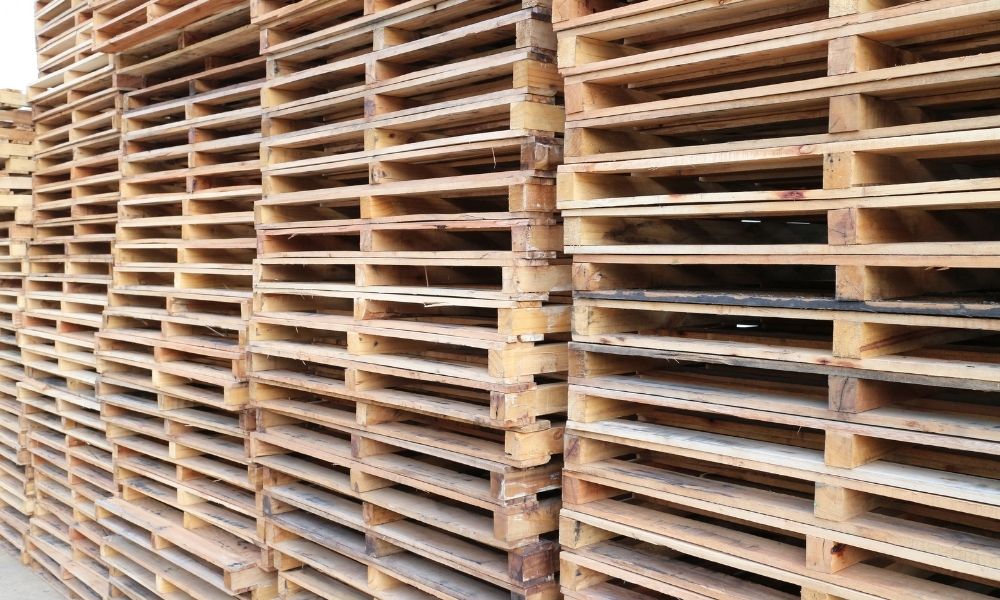As we continue to navigate through the COVID-19 pandemic, our supply chains have been put to the test. Pallet buyers and managers, like other supply chain professionals, have dealt with unprecedented prices and shortages. Here are some of the things we are monitoring.
What is going on with pallet rental?
There is an old industry saying that when CHEP sneezes, the industry gets a cold. Earlier this year, when some rental customers were unable to source supply, they scrambled to find other pallet sources. Most of these companies that came to FALM and other vendors for help in the short term have now returned to their regular suppliers. In its latest quarterly report, Brambles reported a revenue increase of 9% in its CHEP North America business in spite of lower-like-for-like volumes and pallet shortages. One company executive says he doesn’t expect a return to normalcy for several months.
Will more new pallets being purchased result in better core and used pallet supply?
The GMA pallet pool is nourished by the injection of new, rebuilt and repaired pallets, and depleted by the retirement of old pallets as they are relegated to being dismantled for parts or ground to create fiber products. With more new pallets entering the pool, it seems logical that overall pallet quality should improve. But don’t hold your breath. One industry executive stated recently in a webinar that because there are so many poor condition B grade pallets in the pool that should be retired, the impact will be muted.
With tighter pallet supply, recovery and reuse programs are getting a second look.
It makes sense to explore the possibility of pallet reuse in the face of price increases and availability uncertainty. In the right supply chain applications, reuse can provide a significantly lower price per use and help ensure you have pallets when you need them. Yet, the idea of managing a proprietary pallet reuse system can seem like an unwanted distraction to logistics executives. Don’t pass on this opportunity. If you have misgivings about setting up a pallet reuse program or are not sure where to start, why not reach out to an expert such as FALM for a free consultation?
Infrastructure challenges continue to disrupt supply chains.
One of the unique challenges resulting from the COVID-19 pandemic has been the increase in demand for many products as supply has decreased. People spending more time at home have ordered more goods, even as materials, labor and transportation availability have constrained supply. Ports continue to struggle meeting demand, while rail and over the road transport also are feeling the pinch of equipment and staff shortages. Like other sectors, pallet companies have been impacted by freight availability. They face challenges for inbound freight such as lumber and nails as well as shipment of finished pallets. In the case of pallet fasteners shipped from Asia, one distributor said recently his company has seen shipping container cost double, triple or even quadruple. And increasingly, pallet customers with fleets are utilizing them for pallet pickup.
Input price craziness and pallet pricing.
Given the wide ride of price increases associated with inputs such as lumber, nails and overtime labor, pricing by pallet producers to recover cost increases and to remain viable has never been a greater challenge. Successful pallet companies are revisiting their cost and breakeven point metrics increasingly frequently, whereas previously, it might have been a monthly or quarterly exercise. At the same time, pallet businesses require increasingly high lines of credit to cover more expensive inventory. One pallet industry executive from the Midwest reported this October that he knew of four or five pallet operations that had gone out of business in just the last 90 days.
Wood pallet alternatives gain increasing traction.
As the pallet prices soared to unprecedented levels in 2021, it made sense for some pallet decision-makers to move from a single pallet approach to looking for opportunities to utilize cheaper platforms for some of their shipping needs. For example, LITCO engineered wood pallets are stiffer than GMA pallets as well as being ISPM 15 exempt, and nestable to save on freight and storage utilization when empty. Lightweight plastic and cardboard pallets also can make sense for lighter loads or top stacked freight. Additionally, they are ISPM 15 exempt.
The unprecedented pallet market of 2021 has underscored the importance of collaboration and vendor selection. At FALM, we have a network of over 225 pallet suppliers across the United States to meet your pallet needs, as well as industry-leading transportation expertise to help make sure you get your pallets on time. Whether wood pallet purchase, reuse program management, or alternative pallets such as presswood, plastic or cardboard, give us a call. We are happy to help.

